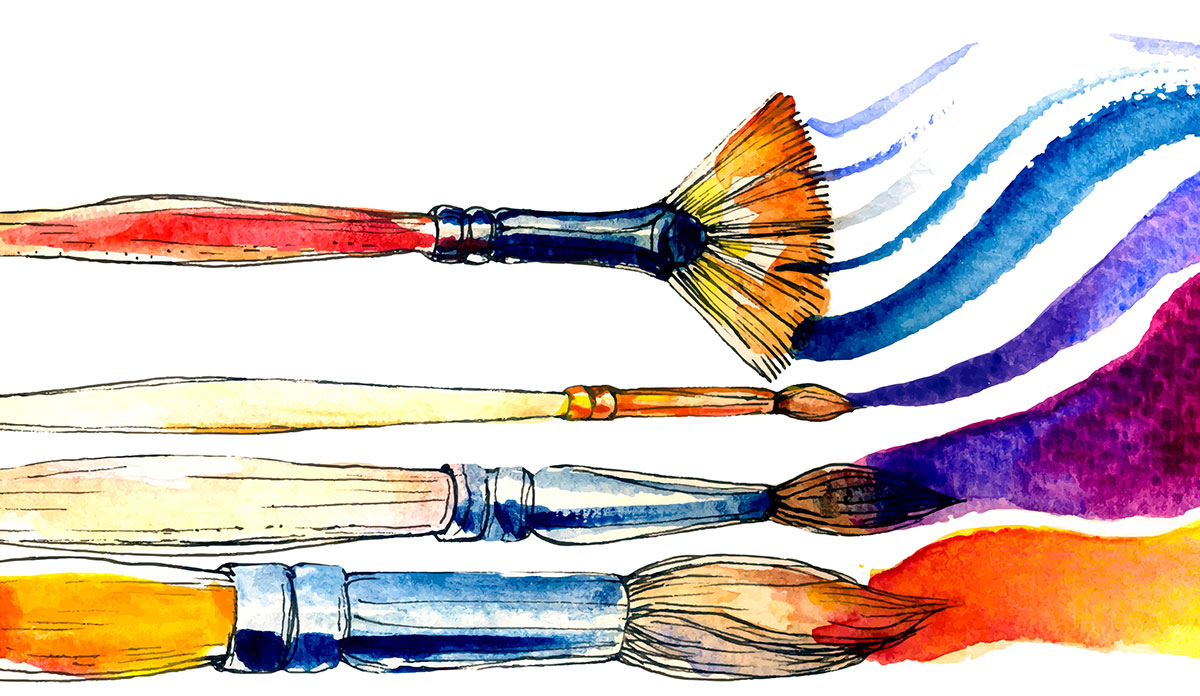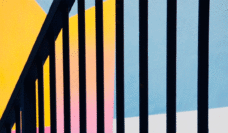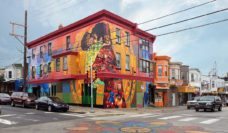Twin mountains receive a turbulent river, canopied by stratus clouds that caress the wings of sailing birds. The scene is marked by a towering gate, crowned with spiked ends. But this gate is made of wax and the mountains are made of lead. This drawing was created by a man who is incarcerated, and represents his idea of safety.
Art programs in US prisons began in the 19th century within carceral spaces, started by incarcerated individuals themselves. Peer-led art activities emerged in creative writing, music, storytelling, and theater performance. The 1960s and 70s brought forth the Black Arts movement, which inspired incarcerated artists to create a space for creativity among the poor, disenfranchised, and “revolutionaries alike”. Prison art programs have been shown to help people develop self-control, self-esteem, emotional understanding, social skills, and internal motivation as those incarcerated are at greater risk for poor mental and physical health than the general population. Universities–including Boston University, the University of Michigan, the University of Iowa and The University of Denver– have forged partnerships with local prisons to establish arts-based programs.
In 2020, researchers Danielle Maude Littman and Shannon M Silva, evaluated the effectiveness of the University of Denver Prison Arts Initiative, which offered art workshops at 8 different sites. The 12-week program included theater, creative writing, literacy, and music. Incarcerated participants were chosen based on an application process and facility discretion. Participants completed qualitative surveys before and after finishing the 12-week workshop period.
“…art is the pathway back to our humanity, an inward journey we share with others, reconnecting to ourselves and the world around us.”
The surveys assessed artistic identity (“do you consider yourself an artist?”), connection to other participants (“looking around the room, I feel connected to…”), skill attainment (“when things don’t go as planned, I am able to problem solve”), self-concept, perspective-taking, and meaning/purpose.
Ultimately, 146 participants completed the pre-surveys and 117 participants completed post-surveys. Overall, participants reported improvement in all areas. One participant mentioned that “Art is the window of the true soul of incarcerated people. Thank you.” Others referenced increased connection –“We were more in tune with the why of each other. That’s what mattered”– and humanity, “You made me feel human after 22 years of not feeling real or that we matter.” Another participant summarized the experience: “We’re all in prison. For me it’s concrete and steel, for someone else it might be work and routine. But art is the pathway back to our humanity, an inward journey we share with others, reconnecting to ourselves and the world around us.”
Art is meant to be shared, creating a connected experience of “us”. By sharing their art with peers, participants felt that “walls came down” between themselves and others in the program, leading to greater empathy and feelings of belonging. An overarching theme in the study was that art offers social and emotional healing and can prepare people for their return into society. The director of the Colorado Department of Corrections, Dean Williams, stated that “We’ve made prisons places of starkness, idleness, a place without purpose. Then we’re confused when people get out and don’t make it. I think that’s on us.”
Most participants in the sample were white and Black males, between the ages of 30 and 60. Incarceration is usually the consequence of previous encounters with law enforcement earlier in life, often as adolescents. Another study by Ramirez et al. analyzed the effectiveness of group art therapy programs in improving social and emotional outcomes for adolescent boys living in poverty in the South Bronx. After attending twelve weekly art therapy meetings, the most marginalized students showed the greatest improvement in school problems, depression, and anxiety.
Based on these findings, art programs for at-risk youth may be preventative and for people who are incarcerated, rehabilitative. To improve the health of our whole society, we must start with the most marginalized. It’s on us.
Photo via Getty Images














